The forest is a beautiful environment, which is why so many people go camping each year, especially in 2023. However, it’s best to be prepared and know the fundamental camping essentials and acquire some basic survival skills before you go camping. That way, if you get lost, you will know exactly what to do.
Disclaimer: The survival hacks and tips on this website are for informational purposes only. The authors take no responsibility for the reader’s individual actions or usage of the information presented on this page.
1. STOP and Think
Use the Boy Scouts mnemonic device of “STOP,” which stands for “Stop, Think, Observe, and Plan.”
You’ve just discovered that you are lost in the forest. You’re unsure about whether or not rescue will be arriving. Here is a list of what you should be doing:
- Retrace your steps.
- Find a source of drinking water.
- Create a fire.
- Find or build a shelter before nightfall.
- Fashion a weapon you can use for self-defense.
- Find a source of food.
- Travel in one direction during daylight.
And more! Read along to find out what tips can save your life if you get lost in the woods.
2. Retrace Your Steps
To survive in the woods, the first thing to do is see if it’s possible to backtrack and retrace your steps to the last known path. Do not panic: chances to get out of forests are higher once your mind is clear. In the absence of a map or a compass, you should use orienting techniques if you are aware of them. Don’t rush into the depth of the forest. Think twice before you choose the direction to follow.
3. Use Your Telephone to the Max

4. Leave Marks as You Go
If you want to find the way out and not get lost in the forest’s unknown terrain, marking the trajectory as you walk can help you survive. Leave some very visible items on your way so that you could easily go back without the need to use a compass and when your phone’s battery is low.
We’ll assume that you could not backtrack for the rest of these instructions and that you are officially lost.
5. Try to Attract Attention by Calling Out Loud
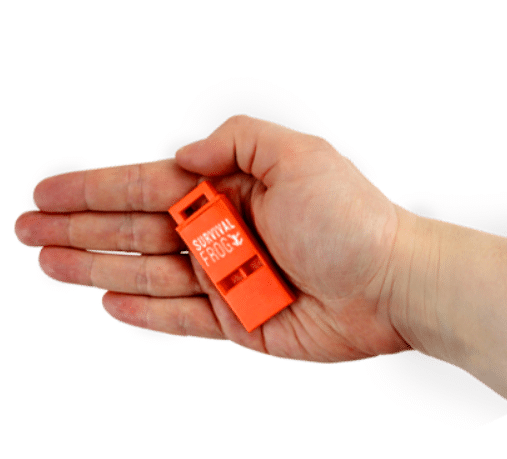
If you have anything that can make a sound, use it and combine it with calling out loud to double the effect and increase your wilderness survival chances. A wonderful option would be a loud survival whistle like this 7 in 1 whistle model. Give three blows three seconds each, maintain your normal breath, then repeat.
6. Find Water:
To survive, one of your priorities should be to stay hydrated. The human body can only survive three or four days without water, so start looking right away for a water source. A good prepper should always take care to grab a few cans of drinking water, you know, just in case.
Common water sources:
Springs/Rivers:
Any streaming water or river with running water will be a good source and help you survive, but keep in mind that just because it looks clean doesn’t mean that it is. You will need to boil the water to kill any bacteria before drinking it. If you have a tin/aluminum can, this will be an effective container to boil water over the flame.
Lakes:
If you come across a lake, this is a great resource for water. You should boil this water also to avoid becoming sick from bacteria.
Rain Water:
In the event of rain, be sure to set out any containers you have to catch falling water. Any large leaves can provide an effective surface for catching rain and funneling it into a container.
Solar Water Still
If there’s no rainfall or freshwater available and you have a sheet of plastic available, then you can make solar water still.
Create a Solar Water Still:
Step 1: Dig a hole in the soil.
Step 2: Place a container in the center of the hole.
Step 3: Fill the gaps surrounding the container with anything wet, such as leaves.
Step 4: Place a plastic sheet over the hole and anchor the sheet in place with larger rocks around the hole’s edges.
Step 5: Place one small rock in the center of the plastic, just over the container.
Step 6: Condensation will occur on the underside of the plastic and run down to the center. It will drip into the container filling it with distilled drinking water.
You can create a water filter with materials at your disposal; however, you need to have some skill to play safe.
7. Build a Fire/Stay Warm
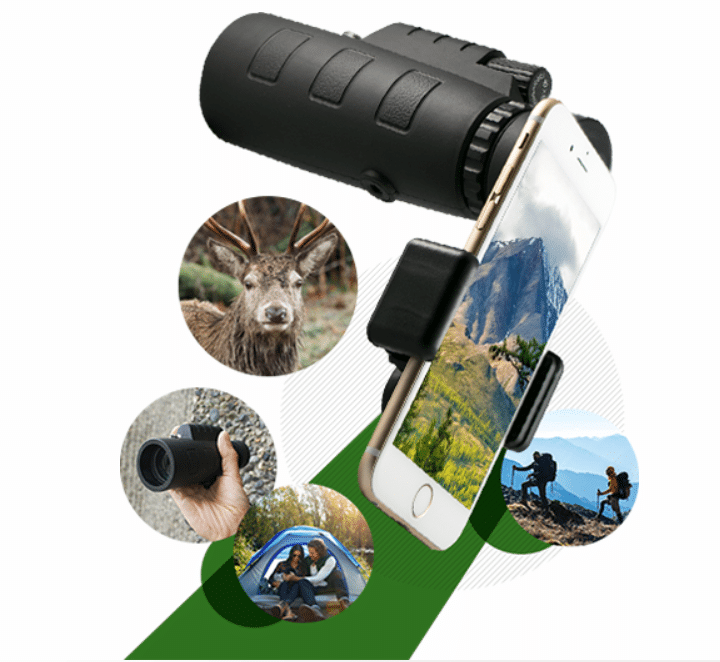
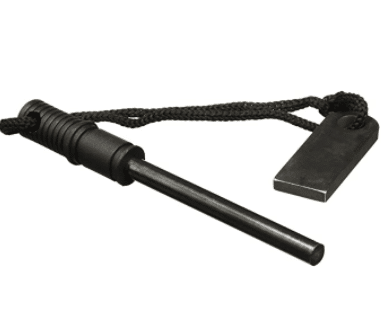
Use the heat to dry any clothing that you might have gotten wet during the day.
Building The Structure:
Step 1: Gather dry sticks and twigs of various sizes.
Step 2: Using the smaller twigs, create a tepee shape with a tinder placed in the center.
Lighting The Fire:
If you have glasses, binoculars, or a camera, use the lens to concentrate the sun’s rays on the tinder to ignite it. Then blow when it starts smoking. Otherwise, your best alternative is to use the “Fire-Plow” method.
The Fire-Plow Method:
Step 1: Find a softwood and cut a groove in its base.
Step 2: Put some tinder at one edge of the piece that you will ignite.
Step 3: Using a hard stick, plow the end up and down this groove to create friction.
Step 4: The small parts will begin to smolder. Blow on it to help fuel the catching process.
Step 5: When it catches, put more small twigs or pine needles to help it grow.
There are also such tools as a bow drill to make yourself with some materials at your disposal. It is better to do a small research about fire-making methods before you go to the woods.
8. Build/Find a Shelter
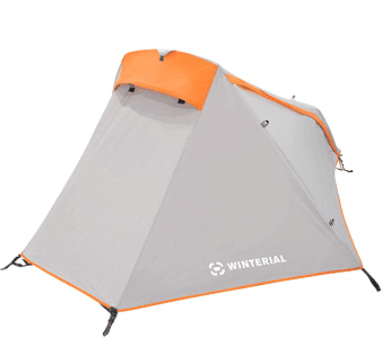
Cave as Shelter:
If you can find a cave, choose it as your first option of shelter.
However, before entering the cave, make sure that animals, such as bears, do not occupy it.
If there are no available caves, your next best option is to create a “Lean-To Shelter.” These are relatively easy to make in a short time so that you can begin focusing your efforts on other survival tasks.
Creating a “Lean-To” shelter:
Step 1: Find a large branch and lean one end onto a tree.
Step 2: Put smaller ones at 45-degree angles along the length of the large branch.
Step 3: Cover the entire structure with leaves and foliage.
9. Your Shelter Must be Visible
Your shelter building must be practical. Not only should your shelter be warm, but it also needs to be visible. Leave some bright items around the site of your camp. Ensure that the fire keeps burning. Smoke signals can be visible in a large territory. If you have a mirror, you can use it to give light signals in the area as far away as 100 meters.
Use tree bark or fir tree branches to produce more smoke. In the daytime, in any weather, nothing compares with a smoke signal. Keep the flame up as long as you can not fail to attract the attention of other people in your vicinity: you can greatly simplify your rescuing process if you attempt to make your stay in the wilderness as visible as possible.
10. Beware of Dangerous Animals

Snakes are among the greatest hazards that you should be aware of while being out in the wilderness. Stay away from the grassy territories covering the ground from sight. Also, stay alert while getting your hands through some cavern or a crease and logs of fallen trees. Once a snake bites you, take care to wash the bitten area with clean water and soap immediately. You should keep a still position for the activity to accelerate the venom’s spread further into your body. Try holding the injured spot up over the heart level; you should bandage the limb loosely to cease the blood circulation.

Apart from snakes, there are no less dangerous predators that should be avoided while in the woods without any weapon. Cute as they sometimes appear to us, bears of various kinds pose a fatal threat to hikers’ safety. Read along and find out how you can get away from a deadly encounter with a bear.
Before you go, think about how much more confidence you would have with some Beretta or S&W 629: your self-defense would be guaranteed or, at least, perked up with a proper survival gun.
11. How to Survive an Encounter with a Bear
Depending on the territory you got lost in, the animal species inhabiting it may differ in behavior and require distinct methods to avoid being seriously injured or killed by them. Regarding the kind of bears, life-safety instructions differ. Continue reading the article to learn how to behave with different bears.
Black Bears
If you see a black bear 50 yards away or more, keep your distance and continue hiking, always making sure not to get closer. If you happen to come across the bear and don’t see you, then carefully walk away and talk loudly to alert the bear to your presence.
Grizzly Bears
If you come into direct contact with a Grizzly bear, avoid eye contact. Back away slowly and allow the bear enough room to escape. Speak softly, but try not to show any sign of fear.
Never run from any bear or try climbing trees. These animals climb trees much better and faster than any human being. This might encourage the bear to chase you, and they will catch and kill you.
The most dangerous scenario is to be between a mother bear and her cubs. If you see a mother and cub, be aware that other clubs may be in the area. Avoid coming close to them.
What to Do if a Bear Attacks
Black Bears: Fight back. Use sticks, rocks, or your bare hands if you have to.
Grizzly Bears: Play dead. Try to show no signs of life. When the bear is done checking to see that you are dead and goes away, don’t get up until the bear is gone. Grizzlies have been known to check back.
12. Avoid Venomnous Insects/Spiders
Depending on which forest you are located in, some insects and spiders are poisonous. To avoid exposure, keep your clothing tucked in and limit the number of areas that insects can crawl inside your clothing. Try to set up your temporary dwelling so it is off of the ground.
You can also take repellents with you that can be helpful against mites and mosquitoes. They can also increase your protection from bigger insects and spiders. The second best way to protect yourself from spiders is avoiding hollow logs, dark places, and tall grass.
Some spiders are extremely venomous, and if bitten, the chances to survive are scarce, especially if you are away from civilization, alone in the wild. So you had better avoid encounters with the spiders and their bites.
13. Traveling/Resting
If you left your house and told people that you were going to the woods, then the chances are that there will be a rescue party. If this is the case, then stay put. It will be easier for them to find you if you are not traveling.
If you are unsure that a rescue party is coming, stay in the same general area to find out. Use the other steps listed in this guide to surviving the wait.
When you have decided that no rescue is coming, it’s time to take matters into your own hands. You’re going to need to walk yourself back to civilization. To do this, you’ll need to follow the steps outlined here but add hiking into the mix.
Travel each day during the daylight hours, then sleep at night.
You can get back to civilization by finding a small river and follow it downhill. As the saying goes, “all streams lead to the ocean.” In the case of forests, think to yourself, “all little springs lead to a trail or road.”
Begin by heading out in the same direction until you find a river or stream. Whether the stream is dry or not, it will still be pointing you in the direction you want to head.
By following the streaming water, you run a greater chance of eventually hitting signs of civilization.
14. Tools and Weapons
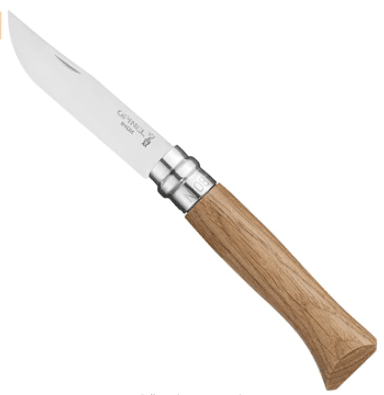
The problem is that many people in survival situations don’t have access to a knife, so the next best thing is to create one from the materials in the forest.
Making a Stone Dagger
Step 1: Find stone made of obsidian or any other rock that has a smooth glass-like surface.
Step 2: Find a larger stone and use it to chip off pieces.
Step 3: By continuous chipping, you will eventually chip off a piece with the required sharpness.
A wood spear stick can be used to hunt and clean fish, roast food over a fire, and as a self-defense weapon.
Making a Wood Spear
Step 1: Find a tree branch. The harder it is, the better.
Step 2: Make sure the thickest part of the branch acts as a comfortable handle.
Step 3: Use anything sharp to carve the tip into an effective point for stabbing.
15. Finding Food Source

Unless you have a guidebook on which food sources are edible, it’s best to play it safe and not eat any.
Characteristics of Poisonous Plants
- White or Yellow Berries
- Thorns
- Mushrooms.
- Bitter or Soapy Taste.
- Clear/Shiny Leaves
- Leaves in Groups of 3
- Umbrella Shaped Flowers
- Milky Sap
- Almond Odor
Trapping Animals
Don’t hunt animals unless you are a highly skilled hunter. Your best option is to trap animals.
Hunting animals uses up precious energy that you should be using to perform the other survival tasks in this guide. Here are the tips:
The 4-Figure Deadfall Trap
Step 1: Gather 3 branches and a heavy stone.
Step 2: Cut notches in the branches, as indicated in the illustration below.
Step 3: Hold up the rock with one hand while positioning sticks “A” and “C.”
Step 4: Once the weight of the rock is resting on “A” and “C,” use your free hand to insert and mount the trigger stick “B.”
Step 5: Let go, and the trap should be balanced and set.
Step 6: When a bird or animal comes along to eat the bait, the trigger stick will trip, and the rock will kill with a fatal blow.
16. Catch and Roast Insects for Protein
A less pleasant option, but as relevant in practice as eating meat, roasting insects can nourish your body. Some bugs without hair and having less than six legs are generally edible, as well as crickets. This type of food fits the basic nutritional requirements. Don’t eat them raw: roast them and enjoy your meal. While some individuals might find this nourishment repulsive, such an attitude will not promote your safety in life and death matters.
Avoid eating the insects of bright and acidic colors: the very nature hints to everybody that this creature makes a doubtful meal.
17. Getting Rescued
Keep in mind that if you are alone, the instructions above are lost, and there is no way that a rescue party will be looking for you. If your friends and family know that you are in the forest somewhere, then the rescue party will look for you.
In this case, you will not want to move much from the place where you first discovered you were lost. This will make it easier for the rescue party to find you.
If days have gone by and you are still not rescued, your other option is to find a spring and make your trail back to civilization.
18. Be prepared
The best tip you can get concerning survival in a forest is, “Be prepared and take your survival kit!” You can never know when and where you will get lost, but it will save your life if you follow simple rules before embarking on a trip to the forest. Take the things that might come in handy if you get off track and get lost, like a first aid kit, matches, anything sharp to serve as a weapon or a tool, water purification tablets. Take a rain-coat if your predict rains and something to keep warm if there is snow in the forecast. Cold can provoke muscle cramps and interfere in your pursuit to find the way out efficiently.
Remember to drink: it is of the highest importance; even rainwater will do. Study the map before you go on a trip and notice important landmarks on the go. Watch insightful videos and read articles about wilderness survival. The videos can be insufficient, but at times, when you face death threats in nature, every particle of knowledge will be of assistance. Inform your friends about your prospective bearings: they will know where you are and direct a rescue team to save you.


